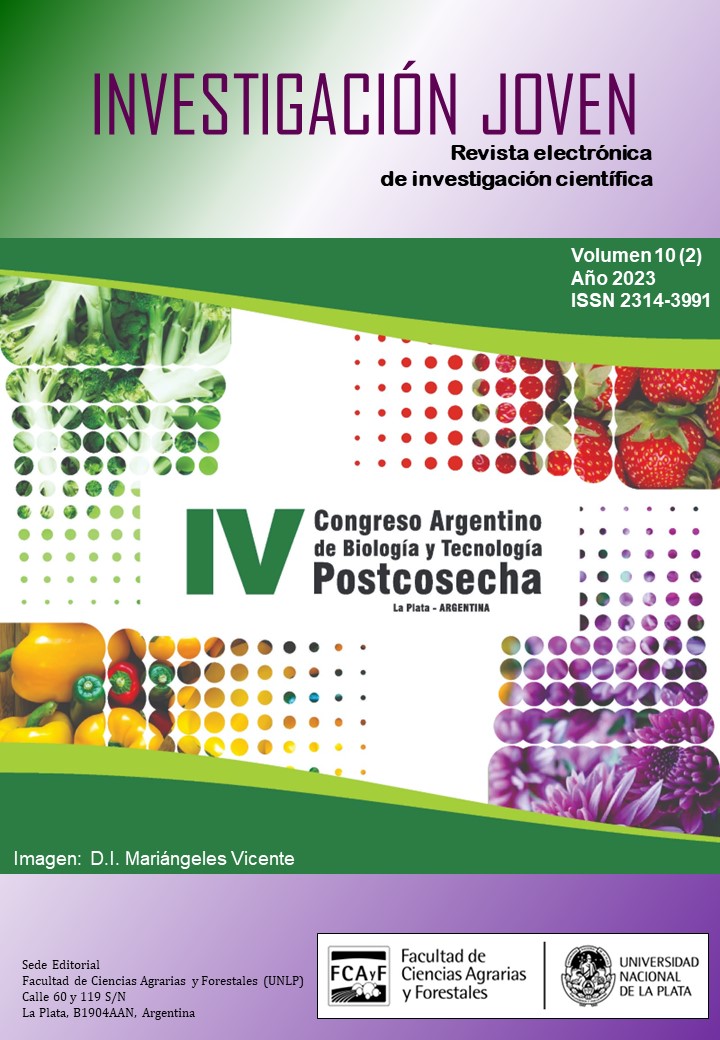Use of regional essential oils against Botrytis cinerea: New biocontrol strategies
Palabras clave:
Solanum lycopersicum, grey mold, Aloysia polystachya, biopesticidesResumen
Botrytis cinerea is a phytopathogenic fungus, agent of gray mold, a disease that affects numerous species of agronomic importance such as tomato, and causes considerable economic losses. It is mainly controlled by chemical fungicides, but their inappropriate use has led to the development of resistance. This has triggered the need for new environment-friendly alternatives that could guarantee the maintenance of production. Plant essential oils (EOs) contain a plethora of compounds, with defensive functions against various pathogens. Biodegradable and safe, EOs represent an alternative to chemical pesticides. Aloysia polystachya is a native species of South America, whose EO is rich in oxygenated monoterpenes, known for their antimicrobial properties. The aim of the present work was to evaluate the antifungal activity of the EO present in two populations of A. polystachya against B. cinerea. The determination of the chemical composition of the EOs was carried out by GC/MS. The antifungal activity of the EO from both populations was evaluated by the fumigant method, using five concentrations (23.6, 47.2, 71, 94.5 and 189 µL/L of air). The effect of the different concentrations of the EOs on conidia germination was determined. The three most effective concentrations in the in vitro fumigant method were evaluated in vivo in an infection model in cherry tomatoes, assessing the severity of the
disease. The effect of these concentrations on quality parameters was also studied. The trials were kept at 25 °C for 5 days. The effect of the EOs on germination was evaluated 8 hours after the start of the treatment. Results were analyzed using one-way ANOVA and Kruskal-Wallis test using Infostat software. It was determined that the EOs used correspond to two different chemotypes, one whose main component was carvone, and the other with thujone as the main constituent. The EO rich in carvone produced the inhibition of mycelial growth for all the concentrations studied. The antifungal activity of the thujone-rich chemotype was moderate, compared to that of the carvone chemotype. All treatments significantly inhibited conidia germination. In the in vivo infection model, the carvone-rich chemotype significantly reduced disease severity at concentrations of 94.5 and 189 µL/L of air, while the thujone-rich chemotype was effective in reducing symptomatology at the highest evaluated concentration. The treatments did not affect the physicochemical parameters. Both chemotypes evaluated showed antifungal activity against B. cinerea, without affecting physicochemical parameters of the fruits. The activity of the carvone-rich chemotype was higher. These results allow us to postulate the use of these EOs as potential sustainable alternatives for the control of B. cinerea.
Descargas
Publicado
Número
Sección
Licencia
Derechos de autor 2023 V. Areco, C. Almirón, F. Achimón, P. Zunino, P. Yaryura

Esta obra está bajo una licencia internacional Creative Commons Atribución-NoComercial-CompartirIgual 4.0.


















